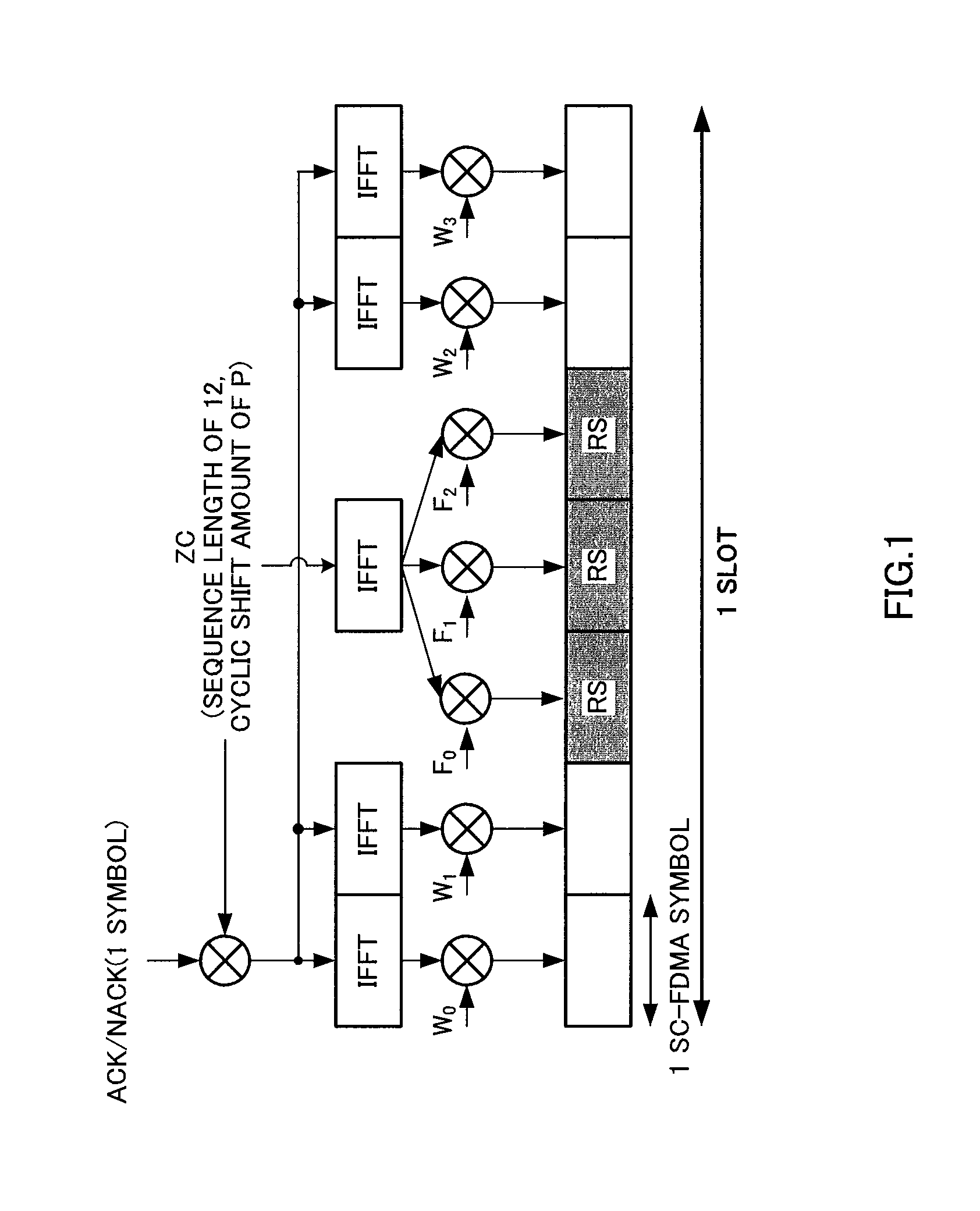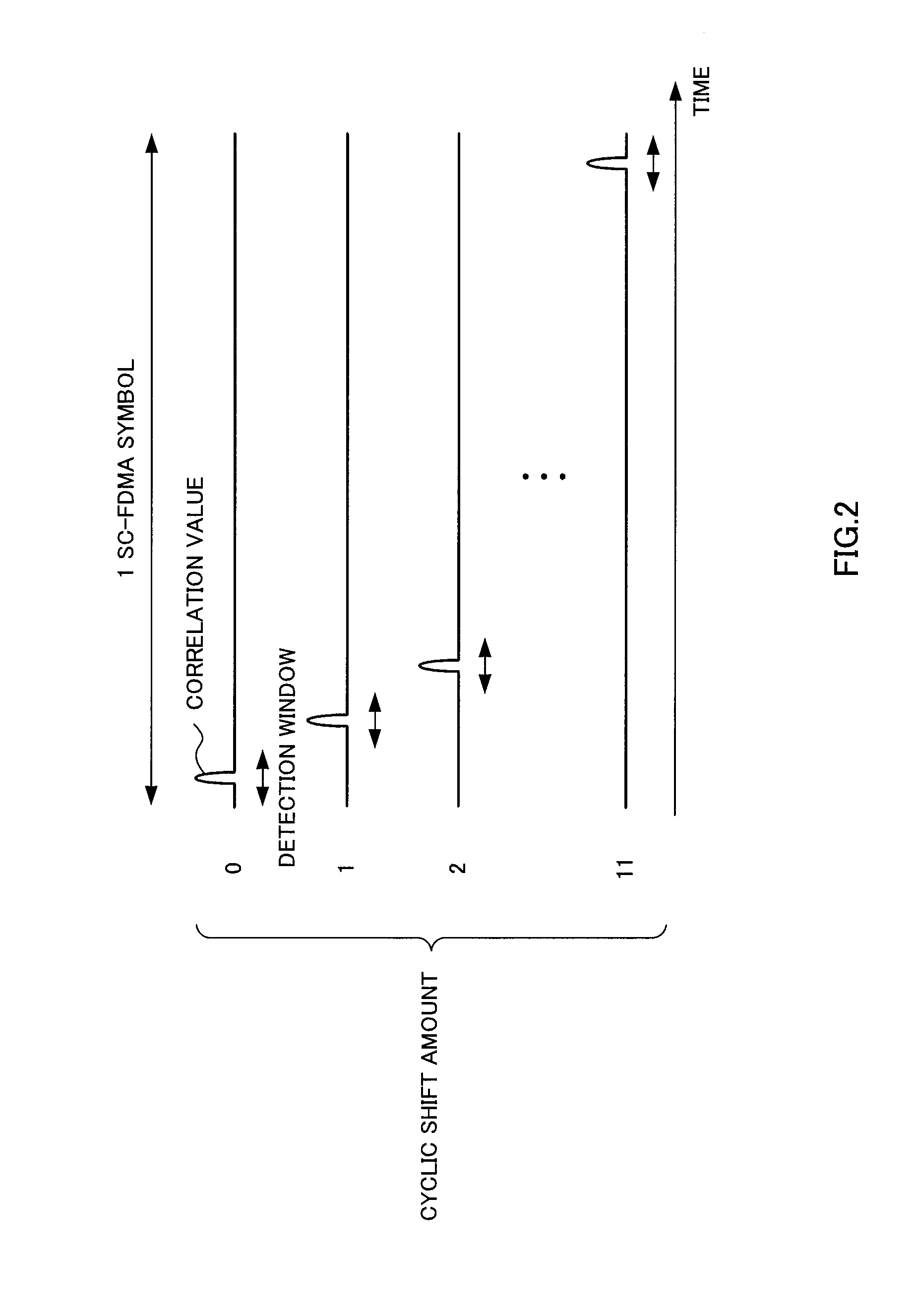Radio transmission device and radio transmission method
a radio transmission device and radio transmission technology, applied in the field of radio transmission apparatus and radio transmission method, can solve the problems of deteriorating performance of separating ack/nack signals, and achieve the effect of improving cqi receiving performan
- Summary
- Abstract
- Description
- Claims
- Application Information
AI Technical Summary
Benefits of technology
Problems solved by technology
Method used
Image
Examples
embodiment 1
[0037]FIG. 6 shows a configuration of base station 100 according to Embodiment 1 of the present invention, and FIG. 7 shows a configuration of mobile station 200 according to Embodiment 1 of the present invention.
[0038]Further, to avoid complicated explanation, FIG. 6 shows components that are related to transmission of downlink data and reception of an ACK / NACK signal in response to this downlink data in uplink that are closely related to the present invention, and the components related to reception of uplink data will not be shown or explained. Similarly, FIG. 7 shows components that are related to reception of downlink data and transmission of an ACK / NACK signal in response to this downlink data in uplink that are closely related to the present invention, and components related to transmission of uplink data will not be shown or explained.
[0039]Further, a case will be explained below where a ZC sequence is used for first spreading and a Walsh sequence is used for second spreadin...
embodiment 2
[0088]The configurations of a base station and mobile station according to Embodiment 2 of the present invention are the same as the configurations shown in FIG. 6 and FIG. 7 of Embodiment 1, and therefore will be explained employing FIG. 6 and FIG. 7.
[0089]How an ACK / NACK signal and CQI signal are multiplexed (i.e. resource allocation) according to Embodiment 2 of the present invention is shown in FIG. 12. Here, assume that the base station performs resource allocation shown in FIG. 12. Note that the horizontal axis represents the cyclic shift amount and the vertical axis represents the Walsh sequence.
[0090]Further, it is focused that RSs of CQI are mainly interfered from ACK / NACK signals spread using ZC sequences associated with adjacent cyclic shift amounts. To be more specific, RSs of CQI receive significant interference from nearby ACK / NACK signals of a small cyclic shift amount, and apply great interference to nearby ACK / NACK signals of a high cyclic shift amount.
[0091]As show...
embodiment 3
[0095]A case will be explained with Embodiment 3 of the present invention where a CQI signal and a response signal (i.e. ACK / NACK signal) are transmitted at the same time. That is, although the base station specifies with respect to a mobile station the timing to transmit a CQI signal, cases occur depending on the timing to allocate the downlink data signal of the base station where a given mobile station transmits a CQI signal and a response signal (i.e. an ACK or NACK) in response to a downlink data signal at the same time. At this time, the CQI signal and response signal that are transmitted at the same time are collectively represented as “CQI+response signal.” Note that the CQI+response signal is represented as “CQI+NACK signal” in case where the response signal is a NACK and is represented as “CQI+ACK signal” in case where the response signal is an ACK.
[0096]FIG. 14 shows a configuration of base station 150 according to Embodiment 3 of the present invention. Note that FIG. 14 ...
PUM
 Login to View More
Login to View More Abstract
Description
Claims
Application Information
 Login to View More
Login to View More - R&D
- Intellectual Property
- Life Sciences
- Materials
- Tech Scout
- Unparalleled Data Quality
- Higher Quality Content
- 60% Fewer Hallucinations
Browse by: Latest US Patents, China's latest patents, Technical Efficacy Thesaurus, Application Domain, Technology Topic, Popular Technical Reports.
© 2025 PatSnap. All rights reserved.Legal|Privacy policy|Modern Slavery Act Transparency Statement|Sitemap|About US| Contact US: help@patsnap.com



